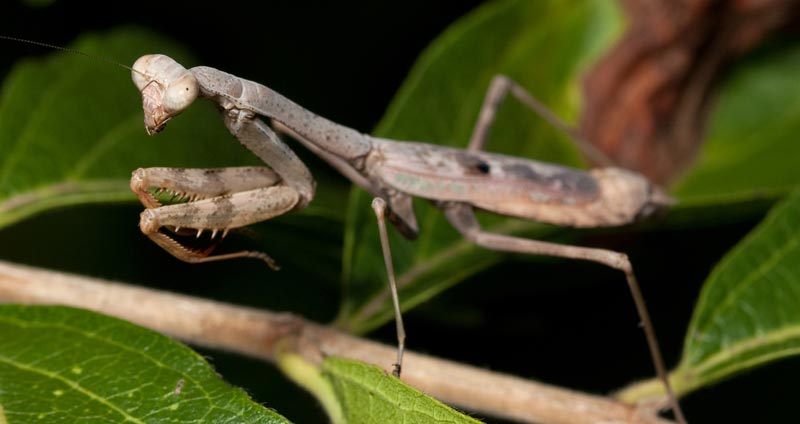Praying mantis are easily some of the most interesting insects out there. Aside from their unique appearance (that makes them look like they’re deep in prayer), they eat, fight, and mate in interesting ways, too.
There are well over 2,000 species of praying mantis worldwide, with many of those being very common to see in the wild and even to keep as pets!
It’s long been said, though, that praying mantis are endangered and that killing a praying mantis brings a minor fine with it. Is this true? Are praying mantis actually endangered?
Table of Contents
Are Praying Mantis Endangered?
No, praying mantis are not endangered. Out of the 2,300+ praying mantis species identified, only M. religiosa is listed as endangered in Germany because of a 1999 study.
There are also no laws at the federal, state, or city level protecting mantises and imposing a fine on those that kill them. The supposed “$50 fine” simply does not exist.
So, if praying mantis are not endangered, where did this myth come from? Why do so many people think that these insects are protected?
This myth may actually have roots in ancient history.
Origins Of This Mantis Myth
Nobody knows for sure where this myth originated from aside from the fact that it first appeared in the 1950’s, but it can be speculated.
There seems to be two main driving forces behind this misconception, both of which will be explained below.
Praying Mantes Are Extremely Beneficial
First and foremost, it needs to be stated that praying mantes are excellent insects to have in nature, primarily because they eat a variety of bugs that are considered pests.
Crickets, beetles, grasshoppers, and spiders all fall victim to praying mantes. Some of these are harmless, but others can cause a lot of damage to crops or simply cause annoying infestations.
Because of this, it would make sense that farmers and people in rural areas would do their best to preserve these great insects.
They may not have stated “killing a praying mantis is illegal”, but “don’t kill these insects” could easily be spun into such an idea.
Praying Mantes Were Sacred
Aside from their helpfulness, praying mantes have also been appreciated for thousands of years for cultural reasons.
Because of its praying appearance, praying mantis were considered gods in southern Africa. In fact, its name in Afrikaans is Hottentotsgot, which translates to “god of the Khoi.”
This affinity wasn’t just limited to Africa, either. Greeks thought that a mantis could guide lost travelers home, and ancient Egyptians say it as a god that leads the souls of the dead to the underworld.
Ancient Assyria saw the mantis as a soothsayer and sorcerer.
Not only that, but two martial arts were based off of the fighting style of the praying mantis.
Due to this cultural significance, it would make sense that killing a praying mantis was seen as a sin or something that should be avoided at all costs.
In Conclusion
Overall, though, praying mantis are not endangered. They thrive in different environments around the world, reproduce successfully, and possess several defense mechanisms.
While it’s not illegal to kill a praying mantis, they should definitely be left to live their life. They pose no threat to humans, and they do wonders for the ecosystem.

